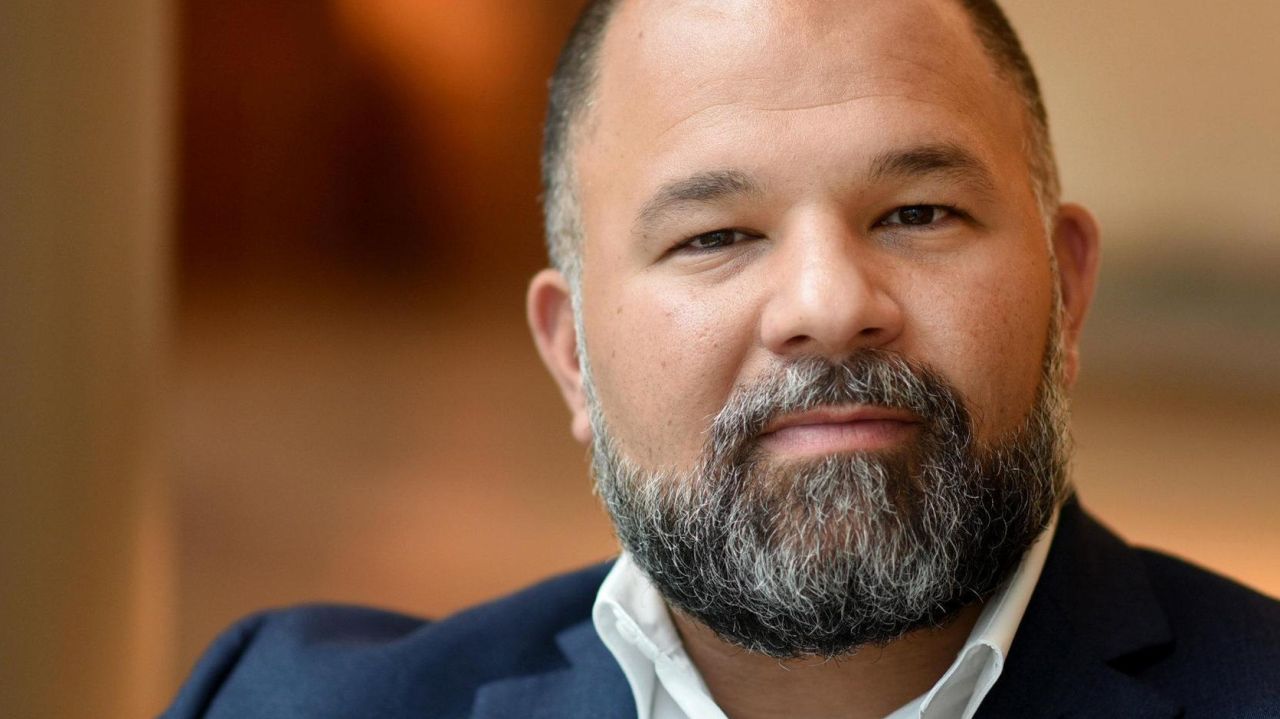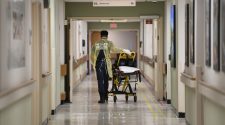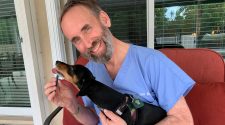Doctors are twice as likely to suffer from depression as members of the general population, but often they don’t seek help because they fear it could impact their careers.
Regional health systems and medical schools are investing millions to help, by launching support groups, expanding services and contracting with third-party behavioral health services.
About 15 percent of doctors nationwide say they’re depressed, according to a 2018 survey of 15,000 doctors by Medscape, a New York-based news and information site owned by WebMD. That compares with about 7 percent of adults in the general population, according to the National Institute of Mental Health in Bethesda, Maryland.
Experts at area health systems said the percentage of doctors struggling with at least low-level depression or burnout is probably higher than surveys indicate.
“Many doctors, as much as 40 percent in some studies, said they’re afraid to ask for help because it could impact their medical license,” said Dr. Marra Ackerman, director of the House Mental Health Program and Student Mental Health Services at NYU Langone in Manhattan.
In addition, doctors are hesitant to speak openly about their mental health issues because they fear it could affect their reputation with patients, experts said.
One pediatric oncologist at Northwell Health who asked not to be identified said Northwell’s internal efforts to provide help made a difference for her.
The doctor sought support twice: Once when an infant she treated died after a yearlong battle with cancer, and another time when a parent refused to approve chemotherapy for a cancer that was curable. She said she doesn’t know what happened to that child.
A Northwell support group “made me feel like I wasn’t alone,” said the doctor. “It’s the sort of support program that wouldn’t have existed 10 years ago.”
The top reasons doctors become depressed — or at the least burned out — include mounting bureaucratic tasks, too many hours spent at work and an emphasis on profits over patients, according to surveys.
A lack of autonomy and insufficient compensation were also cited.
About 44 percent of doctors nationwide said they’re suffering from burnout, according to the Medscape survey.
“People in general are much more willing to admit to burnout than admit to being stressed or depressed,” said Dr. Curtis Reisinger, a psychologist and director of Northwell’s Employee and Family Assistance Program, which offers confidential counseling services. “Our leadership is acutely aware of the statistics and the issues.”
Doctors aren’t the only medical professionals with mental health challenges. The American Nurses Association cites surveys that show 17 percent of hospital nurses are depressed. The group said the job’s physical demands — hospital nurses are often on their feet and darting from one patient to the next — contribute to 82 percent of nurses’ having a “significant level of risk for workplace stress.”
Doctors, nurses and other medical professionals, much like cops and firemen, are often less willing to ask for help, said Dr. Adam Gonzalez, director of behavioral health and founder of the mind-body clinical research center at Stony Brook Medicine.
Nine NYPD officers have commited suicide in 2019.
“It’s a common phenomenon amongst responder groups,” Gonzalez said. “They’re quick to take care of others, but often it is at the expense of their own health.”
The medical profession ranks near the top of occupations with the highest number of suicides, according to Medscape, which added that “it is impossible to estimate with accuracy because of inaccurate cause of death reporting and coding.”
Catholic Health Services focuses on suicide prevention in the general population, and is studying how to incorporate that care to best address the issue of doctor suicides and depression, said Dr. Ronald Brenner, chief of behavioral health services at CHS in Rockville Centre.
The licensing issue weighs heavily on doctors, Ackerman at NYU Langone said.
“State licensure boards vary in terms of how they ask about mental health treatment,” she said. About half of states, including New York, “ask whether the physician is currently impaired from a mental health condition. Other states may ask more broadly about a history of impairment or treatment for a mental health condition.”
While career worries often keep doctors from seeking help, she said those who get treatment early on are less likely to deal with future licensing issues or become “unfit for duty.”
Doctors are also perfectionists, “and that leads them to not asking for help when they should,” added Brenner. In addition, with long work hours, they may have trouble scheduling counseling appointments that work with their schedules, he said.
They also face a problem common to anyone seeking mental health treatment: There is a shortage of mental health professionals in New York, according to the Labor Department, which projected in 2012 that a 25 percent increase in psychiatrists and nearly 30 percent increase in mental health therapists would be needed to meet demand between 2012 and 2022.
Despite the barriers, area health systems said more doctors and other medical professionals are asking for help. They cite a slow erosion of the stigma around seeking mental health support, more internal prevention programs and an increased focus among current medical students on finding a better work-life balance.
Every health system in the region has placed a greater focus on keeping its staff mentally healthy and eliminating the stigma around asking for help.
Brenner, at CHS, said the health system has an “open-minded recruitment policy, where if someone has had mental health problems, it will not be held against them. This is our culture, and it’s something we are proud of.”
Northwell Health in June signed an agreement with Canyon Ranch, a well-known wellness brand, that includes “resiliency training” and wellness programs for Northwell clinicians. The program focuses on self-care topics and lifestyle behavioral changes designed by Canyon Ranch, which operates retreat facilities and spas.
“About 100 employees will work with Canyon Ranch to start, and it’ll grow from there,” said Terry Lynam, a Northwell spokesman, adding that early programs will operate from a Canyon Ranch facility in Lenox, Massachusetts.
Northwell also has contracted with San Francisco-based Joyable, an online program that said it helps workers manage and overcome anxiety or depression. The Northwell contract gives all benefits-eligible employees free access to the program, Reisinger, at Northwell, said. Northwell employees who use Joyable contact the online service directly.
Reisinger said about 5 percent of eligible employees have used Joyable.
“We’d like to get this to 10 percent,” he said, adding that Northwell didn’t have a breakdown of what percentage of these employees are doctors, because the program is confidential.
“Joyable works best when an employee is mildly depressed and it’s not that acute,” Reisinger said. “If it is [acute], Joyable will get an employee’s insurance information and help set them up with a clinician, and Northwell won’t know.”
Anxiety about public speaking led Dr. William Lowe, the medical director for Employee Health Services at Northwell, to use Joyable for eight weeks. Lowe said he had routine check-ins with a cognitive behavioral health therapist, and weekly assignments, which, for him, included challenges such as doing a presentation in front of two co-workers he is friendly with.
“It really helped tremendously,” Lowe said.
The Northwell Pediatric Hematology/Oncology team at Cohen Children’s Medical Center in New Hyde Park launched HOPES, or Helping Our Peers Endure Stress, to assist the department in the event of patient deaths. A HOPES support group is what the pediatric oncologist used.
The division sees about 200 new patients annually, and with the national cancer survival rate of about 80 percent, about 40 of those children will die, said Dr. Jonathan Fish, a pediatric hematologist/oncologist who helped create the program.
NYU Langone two years ago piloted a mental health program for its staff in Manhattan, making a team of psychiatrists and psychologists available six days a week to offer short-term care.
The program treated 117 residents and fellows in 2018 and has received 61 new referrals this year.
Ackerman said she and the program’s staff also meet with staff during orientation and throughout the year to raise awareness of the program.
Stony Brook Medicine offers confidential psychotherapy services to physicians, residents and staff, said Gonzalez, a behavioral health expert at the health system. The services have “become more popular with staff. People talk to one another, and as physicians refer other physicians, they become more comfortable using the service.”
Faculty and staff are also encouraged to use services provided by Stony Brook’s Employee Health and Wellness and Employee Assistance Program, Gonzalez said.
Gonzalez said he also recently conducted research that could help physicians and other health care workers with tight schedules to receive care. Under a four-year grant from NASA, he set out to find ways to deliver mental health care to astronauts on long-duration space missions. The study participants, 145 medical professionals, received delayed text or video therapist support, designed to match the delay in real-time communications if an astronaut were on Mars.
Manhattan-based Mount Sinai Health System, which operates South Nassau Communities Hospital in Oceanside, has a peer support program at its hospitals, where volunteers talk to employees about the challenges of working for a large health system.
“Most medical professionals have a calling to medicine, but the complexity of the job, especially the electronic health records component, has grown to where it’s interfered with their ability to do work,” said Dr. Jonathan Ripp, chief wellness officer at Mount Sinai and the Icahn School of Medicine at Mount Sinai. “The health records were supposed to keep things organized, but it’s been the opposite. It’s all data entry.”
Ripp added, “It’s my job to find ways to make resources available to ease the burdens of the job. It’s those burdens that lead to burnout and depression.”
At South Nassau, every six months residents complete a self-screening tool for depression and burnout, and then have a chance to discuss any concerns with their program director.
“We have about 74 residents, and that will go up to about 94 in two years,” said Dr. Samuel Sandowski, vice president of medical education at South Nassau. “They work about 70 hours per week, and they talk about feeling fatigued.”
Medical students, who often sleep an average of less than five hours per night, are quicker to admit to fatigue and burnout than older doctors, experts said.
Ripp said the Icahn School has a student mental health clinic that has 24-hour on-call services. Visits have doubled since the school placed a larger focus on mental health early this year.
At NYU Langone, about 25 percent of the student body of 400 have participated in some sort of mental health exercise, which could include group or individual psychotherapy, said Dr. Lia Okun, associate director of student mental health services at the Manhattan medical school.
“It’s a nice surprise,” she said. “With the younger generation, it’s much less stigmatized.”
The Donald and Barbara Zucker School of Medicine at Hofstra/Northwell has implemented wellness programs and said it surveys classes to evaluate student morale and resiliency.
Stony Brook Medicine said its students are engaged in wellness clubs and activities that include pet therapy, yoga and mindfulness meditation. They’re also encouraged to practice self-care and seek support and counseling, Gonzalez said.
He said students “want help, and we’re prepared to provide it.”
15%
Percentage of doctors who say they’re depressed
7%
Percentage of the general population that experienced depression in the past year
Sources: Medscape, National Institute of Mental Health













